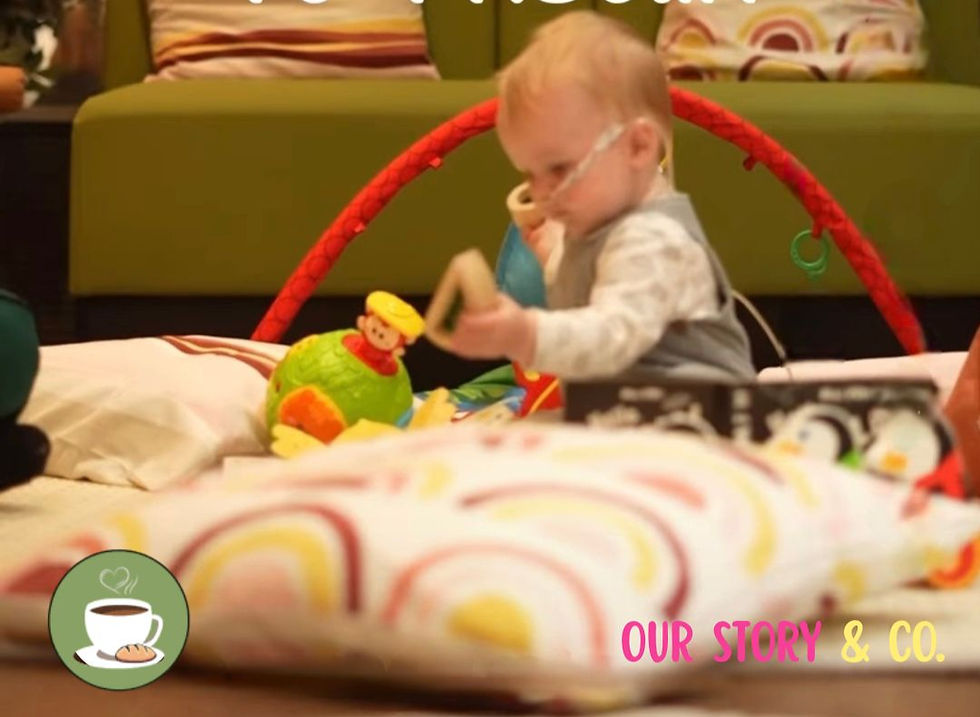
Tickling: Harmless Fun… or Something More?
- Her Story & Co.

- Aug 6
- 3 min read
For years, I thought tickling was just part of childhood.
The giggles. The squeals. The breathless laughter.
But recently, I learned something that made me stop and think.
Laughter during tickling is often a reflex — not a sign of enjoyment.
And once you hear that, you can’t unhear it.
So… why do we laugh when we’re tickled?
Tickling triggers an automatic response in the nervous system — a kind of built-in survival reflex.
When someone touches a sensitive spot like your ribs, neck, or feet, your body reacts with laughter and jerky movements, even if you’re not enjoying it.
That’s right — laughter doesn’t always mean fun.
In fact, scientists have found that:
Tickling produces involuntary laughter, not the same kind we experience during joy or play.
It can cause stress or distress, especially when the person can’t stop it.
Young children and babies may giggle while feeling overwhelmed or powerless.
A 1999 article in American Scientist explained this well:
“Ticklish laughter seems to be a kind of biological ambush. It does not arise from joy but from panic.”
Tickling and power: a tricky combination
Babies and toddlers, in particular, often can’t say “stop.”
And even older children might laugh while feeling trapped or unsure.
Tickling can shift from silly fun to uncomfortable very quickly — especially when:
The child feels overstimulated
They can’t move away
The adult continues despite subtle signs of discomfort
And here’s a chilling historical fact:
Tickling was once used as a form of torture. The response is so automatic, so hard to escape, that it became a tool for control — not connection.

But some kids do enjoy tickling… right?
Absolutely. Like all things in parenting, it depends on the child.
Some children genuinely love it — when it’s:
Expected
Gentle
In small doses
Done with someone they trust
And they get to stay in control
But others might smile on the outside and freeze on the inside.
So what can we do differently
Tickling isn’t “bad.”
It’s just something that needs to be mutual, consensual, and responsive.
Here are some gentle ways to keep it joyful:
✅ Ask permission
“Shall I tickle your toes?”
“Do you want me to stop or carry on?”
✅ Watch closely
If they pull away, go quiet, frown, or stop laughing — stop straight away.
✅ Let them take the lead
Turn it into a power-reversal game:
“You be the tickle boss!”
“Tell me when to start... and stop!”
And if they’re not into tickling? That’s okay too.
Here are some brilliant ways to share connection and laughter — no tickling required:
Silly songs with movement (“Row Row Row Your Boat” with gentle tipping)
Chase or hide-and-seek games where they are in control
Funny stories or puppet shows with big, belly laughs
Peekaboo or soft “boop” games with babies
Snuggles and shared stories where your child feels seen, safe, and loved
When we know better, we do better
This isn’t about blame.
Most of us grew up being tickled until we couldn’t breathe — and just thought it was normal.
But now, we’re learning to tune in more deeply, follow our children’s cues, and offer connection that feels good for everyone.
Tickling doesn’t have to disappear completely.
It just has to feel safe, respectful, and fun for both of you.
And when in doubt?
Connection over reflex.
Joy over tradition.
Curiosity over shame.
You Might Also Like…
Surviving the Toddler Tantrum Tornado
Responding to Your Crying Baby Isn’t Spoiling Them




Comments